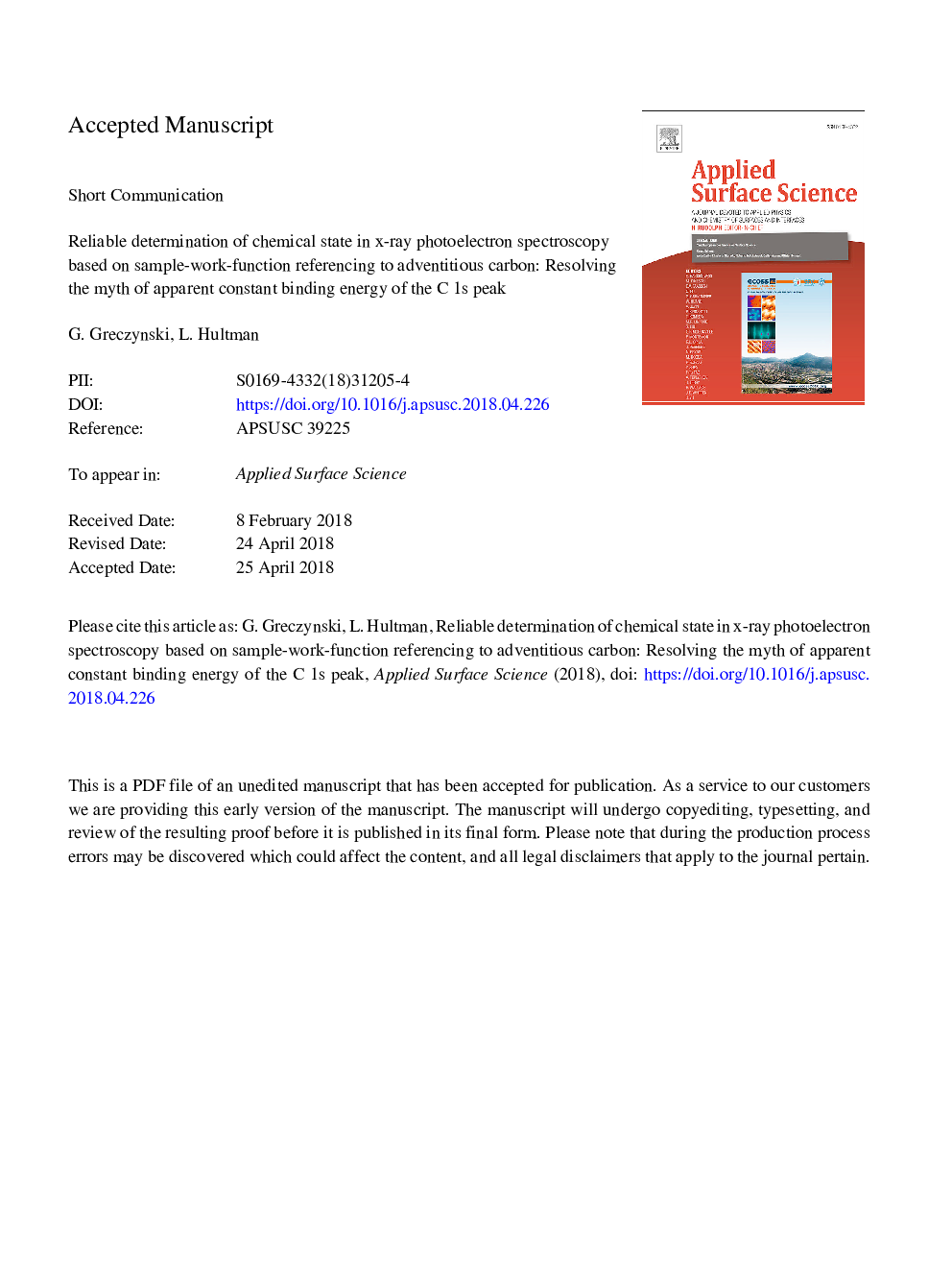| کد مقاله | کد نشریه | سال انتشار | مقاله انگلیسی | نسخه تمام متن |
|---|---|---|---|---|
| 7833530 | 1503521 | 2018 | 20 صفحه PDF | دانلود رایگان |
عنوان انگلیسی مقاله ISI
Reliable determination of chemical state in x-ray photoelectron spectroscopy based on sample-work-function referencing to adventitious carbon: Resolving the myth of apparent constant binding energy of the C 1s peak
دانلود مقاله + سفارش ترجمه
دانلود مقاله ISI انگلیسی
رایگان برای ایرانیان
کلمات کلیدی
موضوعات مرتبط
مهندسی و علوم پایه
شیمی
شیمی تئوریک و عملی
پیش نمایش صفحه اول مقاله

چکیده انگلیسی
The accuracy of chemical-state determination by x-ray photoelectron spectroscopy (XPS) used in contemporary advanced materials research relies on a trustworthy binding energy (BE) referencing method. The C 1s peak corresponding to CC/CH bonds of adventitious carbon (AdC), present on a majority of air-exposed samples, is most commonly employed for this purpose, irrespective of whether samples are electrically conducting or not. Contrary to conventional practice, which takes the BE of C 1s peak of AdC as a constant, we find that the C 1s peak position EBF varies over an alarmingly large range, from 284.08 to 286.74â¯eV, depending on the substrate, for nearly a hundred predominantly thin-film samples comprising metals, nitrides, carbides, borides, oxides, and oxynitrides. Our consistent measurements also show that, independent of materials system, EBF of the C 1s peak is closely correlated to the sample work function ÏSA, such that the sum EBF+ÏSA is constant, indicating that the electronic levels of the AdC layer align to the vacuum level, rather than to the Fermi level as commonly assumed. This phenomenon can be understood given that the AdC layer is not an inherent part of the analyzed sample and that the interaction to the substrate is weak, showing in that a common Fermi level is not established at the interface. Thus, a straightforward complementary measurement of ÏSA enables using the C 1s peak of AdC for the purpose of BE-scale calibration for samples exhibiting decent electrical conductivity. This new practice resolves problems associated with the conventional method and allows for more reliable bonding assignments. It is thus advisable that both ASTM and ISO XPS referencing guides relying on the use of AdC should be reviewed.
ناشر
Database: Elsevier - ScienceDirect (ساینس دایرکت)
Journal: Applied Surface Science - Volume 451, 1 September 2018, Pages 99-103
Journal: Applied Surface Science - Volume 451, 1 September 2018, Pages 99-103
نویسندگان
G. Greczynski, L. Hultman,